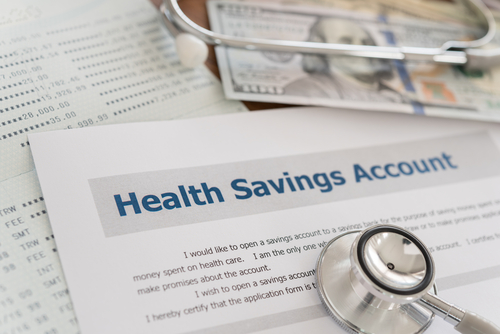Health Savings Account (HSA) adoption rebounded in 2022—but few view it as a retirement account.
 Enrollment in health savings account (HSA)-eligible health plans and health reimbursement arrangements reached a record high in 2020 with 19% enrolled in such a plan, slipped to 18% in 2021, but climbed back up to 19% in 2022. Enrollment in health plans with high deductibles that were not eligible to be paired with an HSA fell from 15% to 12% between 2020 and 2022, according to the 18th Annual Consumer Engagement in Health Care Survey (CEHCS), published by the Employee Benefit Research Institute (EBRI) and Greenwald Research.
Enrollment in health savings account (HSA)-eligible health plans and health reimbursement arrangements reached a record high in 2020 with 19% enrolled in such a plan, slipped to 18% in 2021, but climbed back up to 19% in 2022. Enrollment in health plans with high deductibles that were not eligible to be paired with an HSA fell from 15% to 12% between 2020 and 2022, according to the 18th Annual Consumer Engagement in Health Care Survey (CEHCS), published by the Employee Benefit Research Institute (EBRI) and Greenwald Research.
Over one half (58%) of individuals reported opening their HSA to save for future out of pocket expenses, though nearly as many (57%) opened their HSA to save on taxes. And while about a third reported using the accounts as investment accounts, 18% reported viewing the account as a checking account. More than two-thirds (69%) reported viewing the HSA as a…savings account. Only a quarter (26%) said it was “to help save for retirement.”
Meanwhile, 39% of accountholders reported they would be more likely to accumulate and invest unused funds if they were provided an annual review of their HSA balance, and one third (32%) reported they would be more likely to accumulate and invest unused funds if information about the account benefits and how it works were sent to them via email. Satisfaction rates increased with length of time enrolled in their health plan among both traditional and high deductible health plan (HDHP) enrollees.
Choice Voice
That same 18th Annual Consumer Engagement in Health Care Survey (CEHCS) found that most enrollees spent less than an hour on their health plan during open enrollment, despite having plan choices. HDHP enrollees spend more time than traditional plan enrollees, according to the report. That said, satisfaction with the open enrollment process itself remains high. More than half (58%) were very satisfied, and nearly a third more (32%) were somewhat satisfied with the overall process.
Not that there weren’t choices; about 6 in 10 individuals reported that they have a choice of health plan, and again—HDHP enrollees were more likely than traditional plan enrollees to report that they had a choice. Twenty-nine percent of HDHP enrollees reported that they had three health plans to choose from, compared with 17% among traditional plan enrollees. However, one third still do not know if an HDHP is offered.
When it comes to their health plan, most people thought that the following aspects were very or somewhat important:
- the network of health care providers;
- low out-of-pocket costs;
- low premiums;
- prescription drug coverage; and
- simple to understand.
Generally, traditional plan enrollees and HDHP enrollees ranked these aspects of health care in the same order—with one exception: Traditional plan enrollees reported that low out-of-pocket costs for doctor’s visits were more important.
Auto-Enroll
About 1 in 5 privately insured Americans were automatically re-enrolled, though just 16% of HDHP owners report they had passive enrollment. HDHP enrollees were also more likely than traditional plan enrollees to use employer-provided tools to pick their health plan. Fifty-eight percent of HDHP enrollees used their annual employee benefits guide and 41% used their online portal, compared with 38% and 29%, respectively, among traditional plan enrollees.
Eight in 10 enrollees reported feeling financially secure, and HDHP enrollees were slightly more likely than traditional plan enrollees to report feeling financially secure. That said, nearly a third of enrollees reported that premiums and out-of-pocket costs have increased in the past year (perhaps not surprisingly, HDHP enrollees were more likely than traditional plan enrollees to report higher out-of-pocket costs).
The 2022 CEHCS is a survey of privately insured adults conducted by the EBRI and Greenwald Research. It provides reliable national data on the growth of consumer-driven health plans and HDHPs, and the impact on the behavior and attitudes of health care consumers. The 2022 survey of 2,015 individuals, ages 21 to 64, was conducted using an online research panel from Oct. 17 to Nov. 20, 2022.
The complete 2022 CEHCS 35-page summary is at https://www.ebri.org/docs/default-source/cehcs/2022-cehcs-report.pdf.

